A Day At Lago di Trasimeno
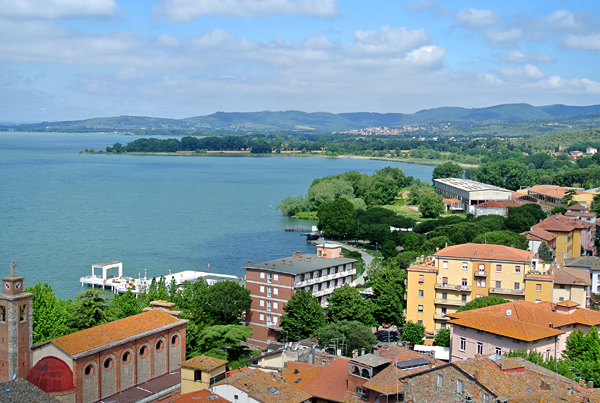
We will be having lots of family visit us here in Umbria this summer which we really love as it gives us an opportunity to share Umbria, our adopted home with them all. When family visit, we enjoy taking them off for the day to explore the region which also gets us away from home more than usual.
When you oversee two farmhouses on a large property, there is always work to be done, and we tend to stick close to home more than we probably should keeping on top of the chores. Having family and friends visit, gives us an excuse to leave the chores behind for a day or two and enjoy this amazing region we now call home.
We recently had our niece and her family visit, and one of the places we visited with them was Lago di Trasimeno. Though Umbria is famous for its historic hill towns such as Assisi. Spello, Gubbio, and Orvieto, there really is a lot more to see in this small region, and all within an hour or so drive. The lake region is one area many tourists ignore, but it has its own unique history and is rich in culture and beauty.
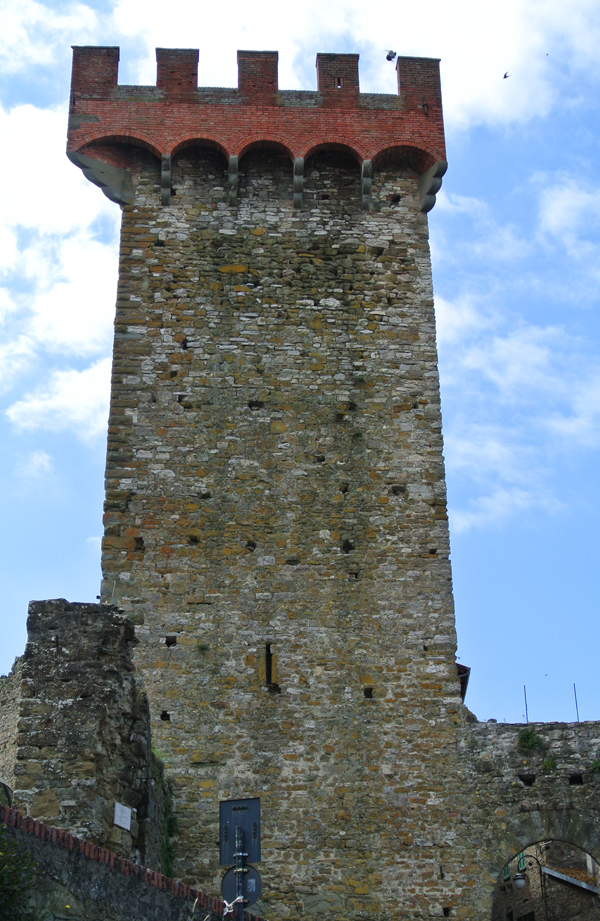 Umbria may be one of Italy’s few landlocked regions, but we do have a few lovely lakes, Lago di Trasimeno being the largest. Trasimeno is the 4th largest lake in Italy and covers 48 square miles and sits in the heart of Umbria.
Umbria may be one of Italy’s few landlocked regions, but we do have a few lovely lakes, Lago di Trasimeno being the largest. Trasimeno is the 4th largest lake in Italy and covers 48 square miles and sits in the heart of Umbria.
The lake is surrounded by small towns, some on panoramic hilltops while others sit along its shores. The towns of Citta’ della Pieve, Paciano, Panicale, and Piegaro sit high up in the hills overlooking the lake while Passignano sul Trasimeno, Castiglione del Lago, Magione, and Tuoro sul Trasmineno are situated along its shores.
Our two favorite towns to visit are Passignano sul Trasimeno and Castiglione del Lago as both are large enough to explore and have many good restaurants that serve fresh water seafood from the lake.
Lago di Trasimeno is surprisingly only 4 meters deep on average and has no large rivers running into it. Its shores are shallow and muddy, though the lake is rich in fresh water fish. Legend states the name came from Prince Trasimeno, son of an Etruscan king, who met his true love Agilla along the shores of the lake.
They fell in love, but the young prince tragically died, and the lake was given his name. The Trasimeno climate is quite warm, with moderate winters. Summers can be very warm and humid, but in general the lake moderates the climate both in cold and warm conditions because even shallow water curbs temperature fluctuations.
The lake contains three islands, Isola Minore, which is a private island, and both Isola Povese and Isola Magiore can be reached by ferry though Isola Magiore is the only inhabited one. Isola Magiore has only about 30 full time residents now, but was a popular summer retreat for royalty in the 14th century. Most of the buildings, including the ruins of a Franciscan monastery, date from the 14th century.
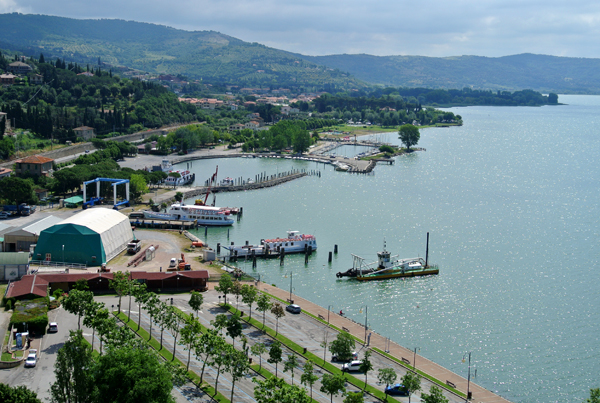 Our first stop of the day was to Pasignano sul Trasimeno, an ancient fishing village that sits along the shores of the lake. More than a thousand years of art and architecture can be found in this lakeside holiday resort which also offers all kinds of water-sports, tennis, horse-riding, and trekking.
Our first stop of the day was to Pasignano sul Trasimeno, an ancient fishing village that sits along the shores of the lake. More than a thousand years of art and architecture can be found in this lakeside holiday resort which also offers all kinds of water-sports, tennis, horse-riding, and trekking.
The town sits high on its own promontory midway between Cortona and Perugia. The village isn’t large, but you can enjoy a couple of hours walking through the town checking out the shops, visiting the Church of Madonna dell’Oliveto, or the church of San Cristofer, and walking up to the Rocca, or fortress that sits above the town with magnificent views of the lake.
Castiglione del Lago sits on the western end of Umbria close to the border of Tuscany and is considered the main town along the lake. The town sits up on a hill, and at one time, was the lake’s fourth island. Over the centuries as the town grew and became more populated, the gap between the island and the shore was filled with houses, churches and other buildings.
The newer part of the city is a fair distance from the older historical center of Castiglione del Lago, and the older center is a fairly well preserved medieval locality that seems to be governed by a “law of threes”. In the town walls, there are three gates, and inside the town there are three piazze and three churches. The Roman origins are visible throughout the town, and sites worth visiting in Castiglione are the Palazzo della Corgna, the church of Santa maria Maddalena, and the Church of San Domenico.
Also worth visiting in Castiglione is the Castello del Leone (“Fortress of the Lion”) which was built by Emperor Frederick II during his reign over Castiglione during the 13th century. The castle features square towers in four of its corners and a triangular shaped bastion, or donjon, known as the Mastio in the other. The castle was designed to give its owners strategic control over all of Lake Trasimeno and has withstood a number of sieges over the subsequent centuries.
Photos of our day around Lago di Trasimeno!
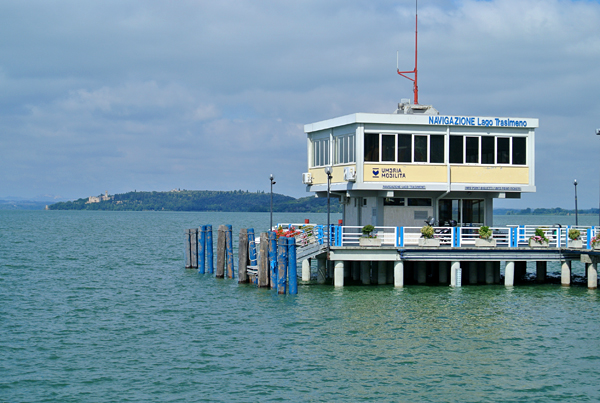
The ferry to the islands at Passignano sul Trasimeno.
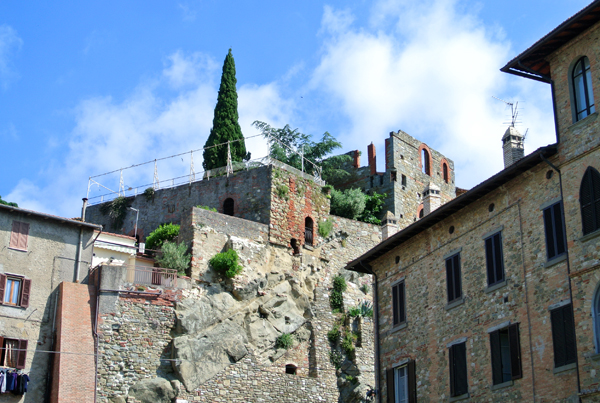
Passignano sul Trasimeno is built upon a chalk promontory.
View over the lake from the Rocca.
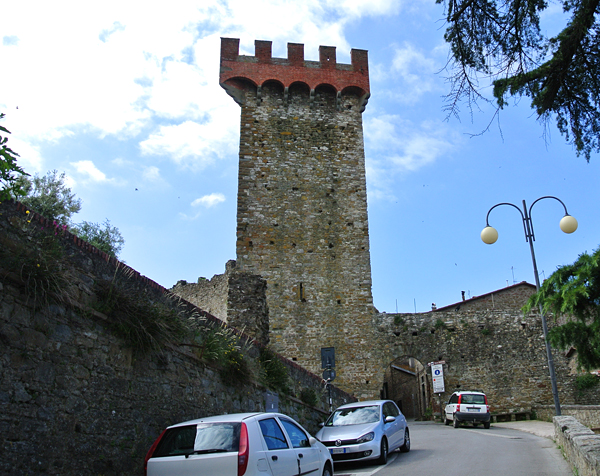
The tower of the Rocca.
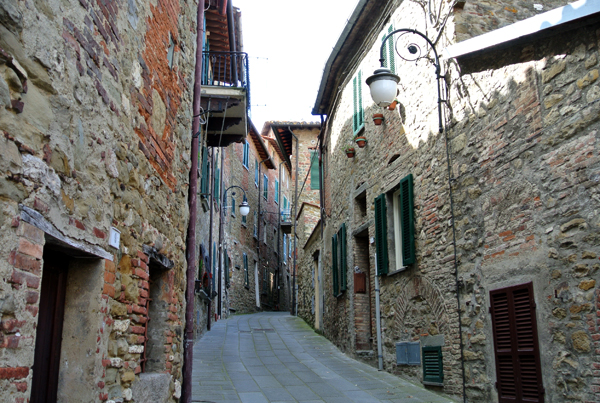
The narrow winding streets of the old town leadiing up to the Rocca.
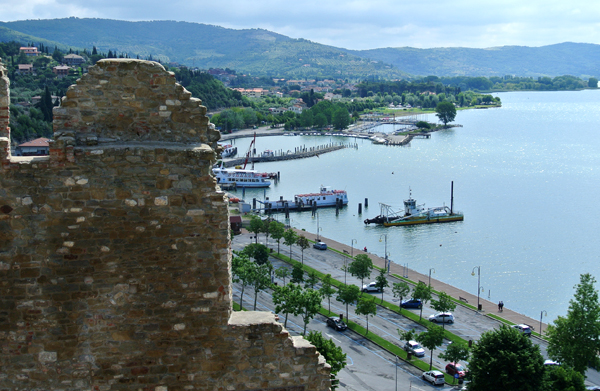
View of the shoreline and fishing boats from the Rocca.
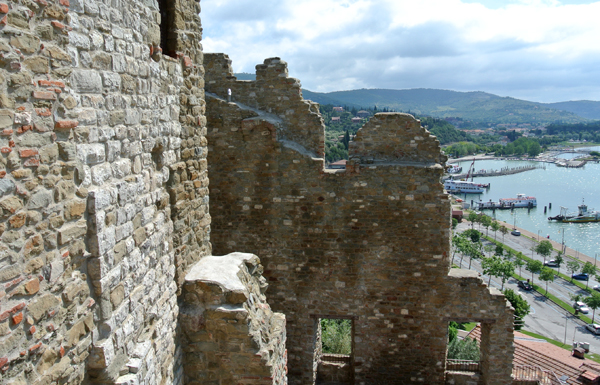
The walls of the Rocca.
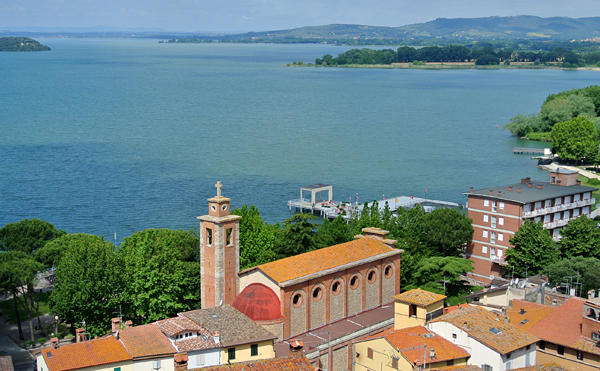
The lake and ferry dock at Passignano sul Trasimeno.
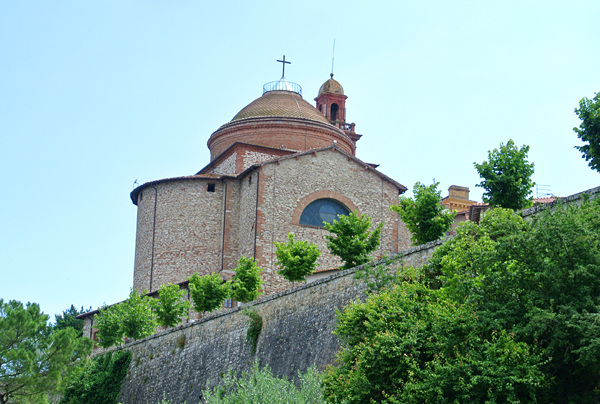
Church in Castiglione del Lago.
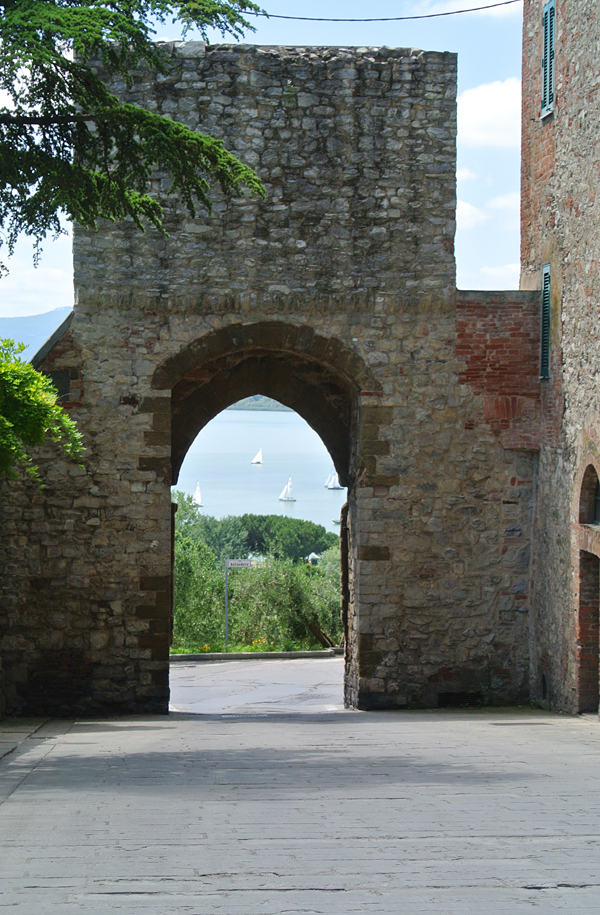
Arch in the walls around Castiglione sul Lago looking over the lake.
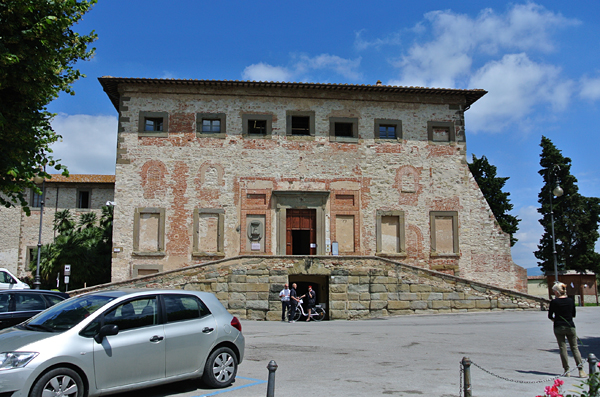
The museum in Castiglione del Lago.
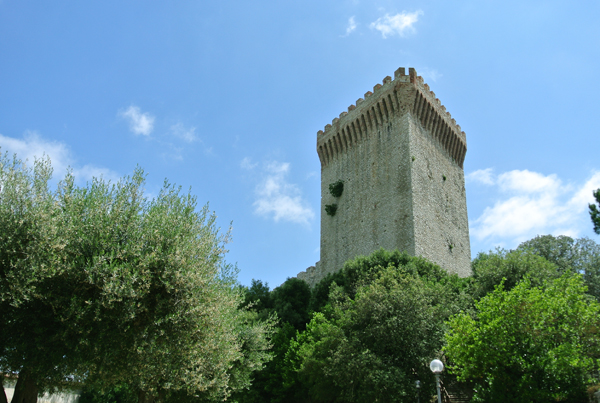
Castello del Leone. Has an amplitheater within its walls to host concerts.
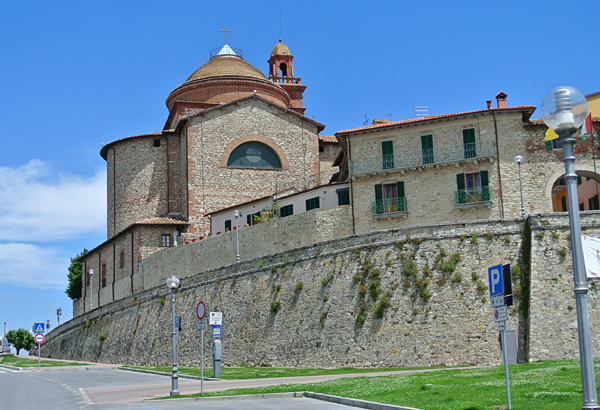
Castiglione del Lago.
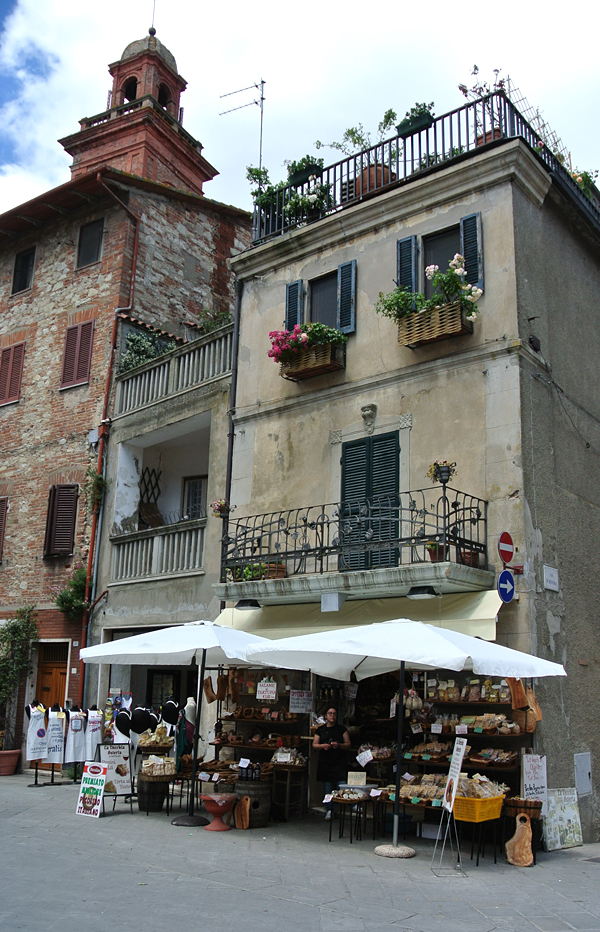
One of the many shops throughout Castiglione del Lago where shop owners offer free samples of Umbrian products and vigorously try and sell their goods.
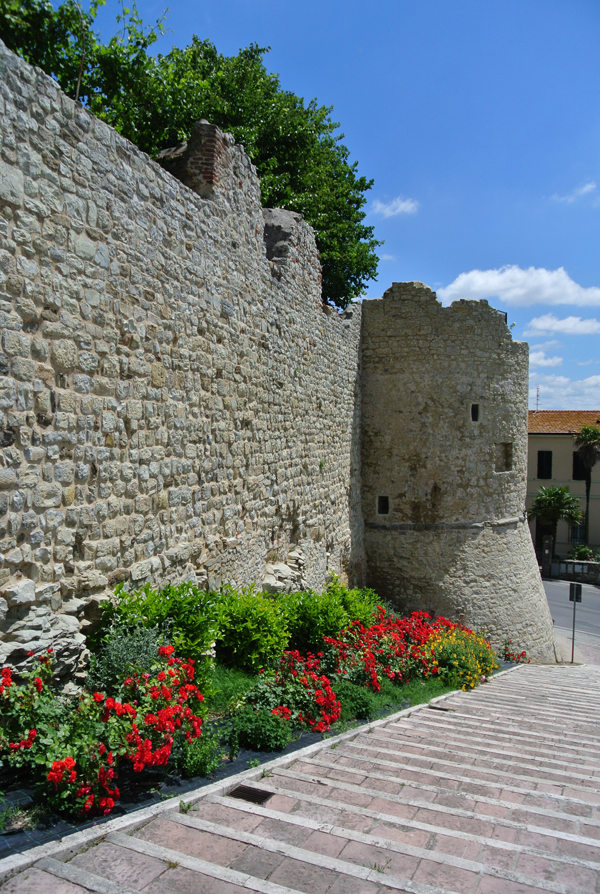
Walls around Castiglione del Lago.
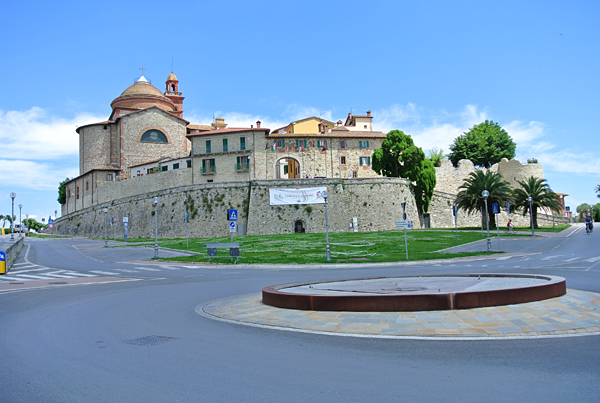
The old town section of Castiglione del Lago surrounded by walls.
Deborah Mele
June 2013
Love Castiglione del Lago. Always go there to get our truffled cheese to bring home!!!